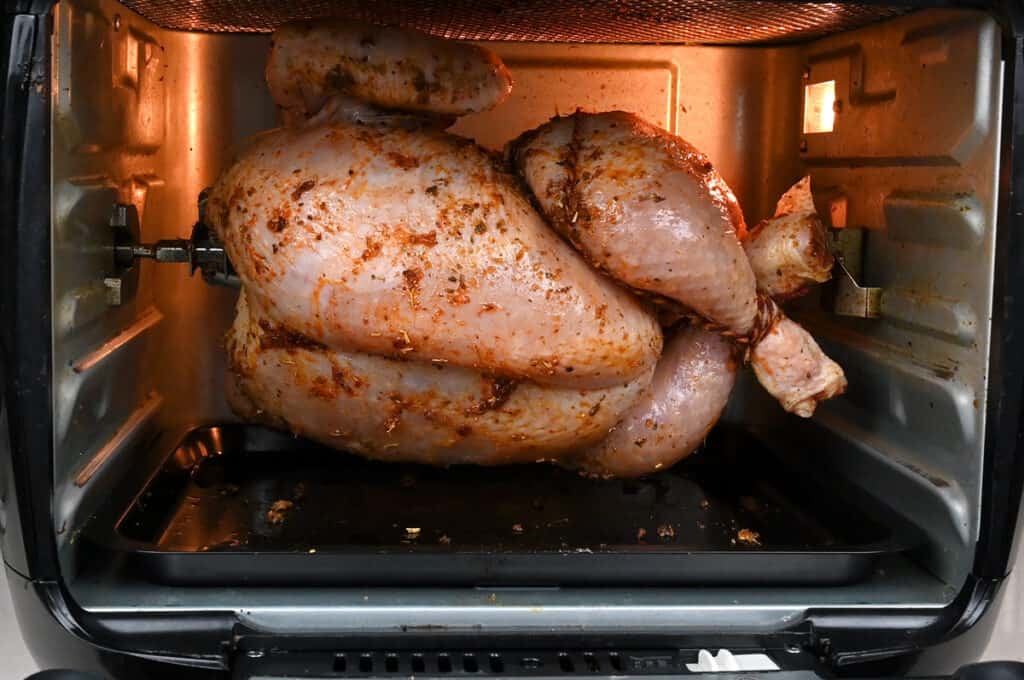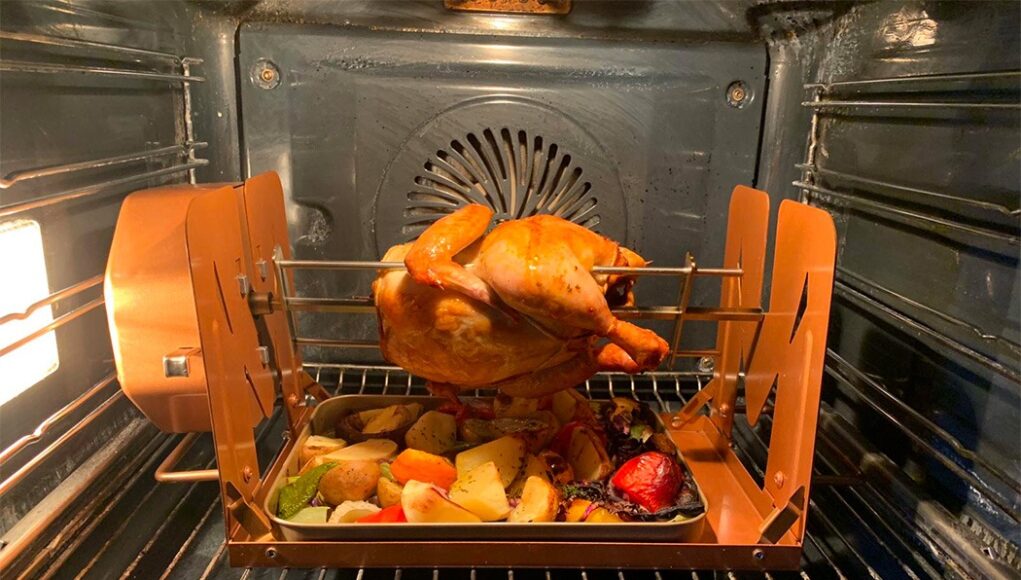Rotisserie chicken is a meal that has won the hearts and taste buds of many. Its delicious flavor, crispy skin, and tender meat make it a popular choice for dinner tables. Have you ever wondered why is rotisserie chicken so cheap? It is fascinating when you consider the many steps involved in bringing these ready-to-eat chickens to your local grocery store. The answer involves a combination of modern technology, efficient supply chain management, and surprising marketing strategies.

Introduction: The Popularity of Rotisserie Chicken
Walking into a grocery store, you might notice the delightful aroma of freshly cooked chicken wafting through the air. Rotisserie chickens sit invitingly under heat lamps, their skin glistening and golden. Besides being delicious, they are also incredibly affordable. In this article, we will dive into the various factors that contribute to the low cost of rotisserie chicken.

The Role of Modern Technology in Chicken Farming
The poultry industry has significantly modernized over the last few decades. By utilizing advanced technology in monitoring chicken health, growth rates, and environment, farmers can produce larger volumes of chicken at lower costs. Automation in feeding, watering, and egg collection reduces labor costs, which trickles down to the final price of rotisserie chicken.
Automation and Efficiency on Farms
Automated systems in poultry farming include temperature control, feeding schedules, and even harvesting. These systems ensure consistency and reduce human error, providing a high yield with minimal losses. As a result, more chickens reach the market, thereby reducing their price.
Genetic Selection for Faster Growth
Through careful breeding practices, modern chickens grow much faster and larger than their ancestors. Selective breeding for traits such as rapid growth and high feed conversion efficiency means that chickens require less food and time to reach market weight, further lowering costs.

Efficient Supply Chain Management
From farm to table, the journey of a rotisserie chicken involves various steps, each optimized for cost-efficiency. Highly organized supply chains ensure that chickens are processed, transported, and cooked with minimal waste and delays.
Vertical Integration in Poultry Companies
Many major poultry companies control all aspects of production, from hatching eggs to processing to distribution. This vertical integration allows for tighter cost control and less reliance on external contractors, providing savings that can be transferred to consumers.
Strategic Partnerships and Bulk Buying
Retailers often enter into strategic partnerships with poultry producers, ensuring a steady supply of chickens at a reduced cost. Bulk purchasing further reduces the cost per chicken, as economies of scale come into play.
Marketing Strategies and Consumer Behavior
Retailers use rotisserie chickens as a loss leader, a strategy where a product is sold at a low price to attract customers who will likely buy additional items with higher profit margins.
Loss Leaders and Store Traffic
By pricing rotisserie chickens affordably, stores encourage shoppers to visit more frequently, increasing overall sales. The enticing smell and convenience of a ready-to-eat meal make it an easy choice for busy families, further driving store traffic.
Encouraging Impulse Buys
The strategic placement of rotisserie chickens near the front of the store or in high-traffic areas entices shoppers to make an impulse purchase. Often, these shoppers will buy side dishes, beverages, or other items they need to complete their meal, increasing the store’s overall sales.
The Cost Breakdown of Rotisserie Chicken
Understanding the specific costs associated with producing and selling rotisserie chicken provides a clearer picture of why they are so affordable.
Lower Labor Costs
Cooking rotisserie chickens in large batches requires fewer employees compared to preparing individual meals. This reduced labor cost, combined with efficient cooking methods, keeps the price low.
Minimized Waste
By cooking whole chickens, retailers minimize waste as almost every part of the chicken can be used. Leftovers can be repurposed into soups, salads, and other prepared foods, further reducing waste and maximizing profit.
Impact of Consumer Demand
The high demand for rotisserie chicken plays a significant role in keeping prices low. As consumers continue to buy these chickens, retailers benefit from economies of scale.
Consistent Sales Volume
The popularity of rotisserie chicken means that retailers can sell large quantities daily. This consistent sales volume ensures that production remains cost-effective and prices stay low.
Feedback and Adaptation
Retailers regularly gather consumer feedback and adapt their offerings to meet changing tastes and preferences. This close attention to consumer demand helps maintain high sales and low prices.
Sustainability and Ethical Considerations
While the low cost of rotisserie chicken is appealing, it is essential to consider the sustainability and ethical implications of production practices.
Efforts Toward Humane Treatment
Many consumers are increasingly concerned about animal welfare. As a result, some producers have adopted more humane practices, such as improved living conditions and reduced use of antibiotics.
Sustainable Farming Practices
To address environmental concerns, some poultry farmers are implementing sustainable practices, such as using renewable energy, reducing waste, and improving feed efficiency.
Conclusion: The Journey of a Rotisserie Chicken
The affordability of rotisserie chicken is the result of a complex interplay of technology, efficient supply chain management, and strategic marketing. While these factors make it possible for consumers to enjoy a delicious and budget-friendly meal, it is also essential to consider the broader implications of production practices.
If you want to learn more about how to prepare rotisserie chicken, check out this comprehensive guide.
FAQs
How long can rotisserie chicken stay in the fridge?
Typically, rotisserie chicken can be stored in the fridge for up to 3-4 days. For more details, check this guide.
What are some quick recipes with rotisserie chicken?
Rotisserie chicken can be used in many dishes like salads, soups, and casseroles. To discover more quick recipes, see this quick recipes page.
Can you freeze rotisserie chicken?
Yes, you can freeze rotisserie chicken for up to 2-3 months. Proper storage will ensure it retains its flavor and texture.
For more tips on heating, shredding, and storing rotisserie chicken, visit these links:
As an Amazon Associate, I earn from qualifying purchases.









